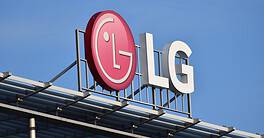According to various catastrophe risk-modeling services, estimates of the damage caused by Irma alone now range between $40 billion–$50 billion.
Barely after the winds from Hurricane Irma stopped pounding Florida, insurers in the Sunshine State began to breathe a collective, albeit pensive, sigh of relief when assessments dramatically decreased the projected cost of the overall damage incurred by the storm.
Pre-Irma damage predictions were assessed to be anywhere from $120 billion–$150 billion, with solvency being a question mark for some smaller insurers that issue risky but higher yielding catastrophe bonds, or “cat” bonds.
Cat bonds act as a vehicle for insurers to raise capital against the potential for future large payouts when risk coverage is triggered by a weather calamity like a hurricane.
Estimates of the damage caused by Irma now range between $40 billion–$50 billion, according to various catastrophe risk-modeling services, such as Boston-based AIR Worldwide.
Dr. Shahid Hamid, a business professor with Florida International University’s (FIU) International Hurricane Research Center in Miami, told Global Finance that if the damage to Florida had been higher, it could have been a big problem for insurers.
“If Irma had gone through the east coast of the state, losses could have been in the $100 billion–$150 billion range, which would’ve been disastrous for the insurance industry,” says Hamid. “But [the hurricane] went [to] the west coast and the damages were lessened.”
Hurricane-related insurance deductibles for wind-damage insurance, for example, can be extremely high. (The federal government handles flood insurance.)
“The impact of the [insurance] triggers are eventually borne by the homeowner, who can pay anywhere between 50%–70%” of the coverage assessed in the form of deductibles or insurance premiums, Hamid says.
Dr. Joel Barber, a business professor at FIU who specializes in bonds, said that before Hurricane Irma made landfall in Florida, cat bond trading dipped, with rates following suit. However, after the storm, the cat bond market bounced back relatively quickly.
By Sept. 18, two more tropical storms—Maria and Lee—were moving to fill the void Irma left behind. At the time of going to press, Maria had developed into a Category 4 hurricane, hitting, amongst others, Puerto Rico and the British Virgin Islands.
Gary Martucci, director of global insurance ratings at Standard & Poor’s, said cat bond investors would be exposed this year to the hurricane season. “As long as investors don’t question the model, it’s fine—it’s just like investing in stocks. Just because stocks go down, you don’t run for the hills.”



